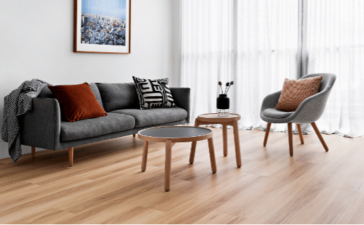Dry rot is fungal colonization that occurs inside your house walls and wooden structure on its basement. It decays the wooden structure in your building and weakens its foundation. Dry rot thrives well where the wooden structure is humid and have low temperatures between 28-30%.
Before the fungus begins appearing on your walls, it may take up to a year. Dry rot does not damage the masonry in your building. It may travel through the walls and weaken the stability of your building structure.
Most homeowners do not have a trick to identify and treat dry rot infestation on their building. This article gives you some tips to identify and treat dry rot on your walls to prevent the damages they cause on the overall building structure.
What is the cause of Dry Rot?
Dry Rot mainly infests the wooden structure on your building if the house was built with a non-kiln dried timber or has a damp problem. The moisture content in the wood used for construction should be below 20% to prevent dry rot and wet rot from infesting them.
Walls with faulty DPC experience rising damp that may cause a lot of damage, according to information released by dry rot treatment experts. Faulty DPC allows moisture to enter the timber used in the construction of the old house. Roof flashing and damaged chimney can increase the moisture content in the wooden structure of the house and create a conduce environment for dry rot formation.
Differentiating Dry Rot and Wet Rot
Dry rot and wet rot are common infestations on houses during the winter. Dry rot does not travel beyond dry points on a colonized timber hence easy to handle. The difference between the two is based on the type of wood they infest. Wet rot is found on wood with moisture content above 20%. When the moisture content on wood reduces, the dry rot sets in while the Wet Rot perishes.
The other way of differentiating the two is based on their colour. Wet rot is black, white or brown while dry rot is mainly grey.
Treating Dry Rot Infestation
Before treating the dry rot, you should find out the level of infestation on the timber. Use the Fugenex sensor sticks to determine the level of damage it has caused on the wood. If the Dry Rot has affected the outer part of the timber, you can consider treating the wood itself. Treat the surrounding masonry to avoid future infestation.
Hire a building professional to help you replace the damaged timber. After the repair is done, you must ensure the surrounding masonry is disinfected with the right fungicides. Using your sensor stick, inspect your walls to find out the regions infected with the dry rot. You can then peel the plastic on the wall and treat it before repairing it again.
Conclusion
Dry rot can cause a lot of damage to your building if not treated immediately. You can reach out to an exterminator or an IPM professional to help you remove the infestation from your building. Ultimately, you must ensure you use timber with low moisture content when building your house to prevent dry rot infestation in the future.





